Bell: description and varieties, planting and care
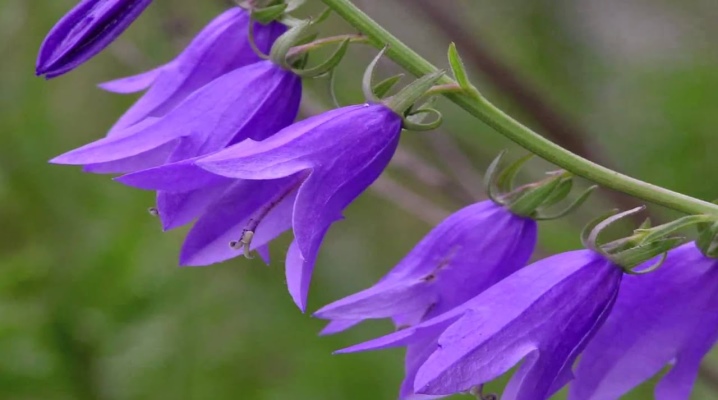
A flower like a bell has been known to everyone since childhood. But few people know that there are a great many varieties and varieties of this plant. The bell can be found on a forest lawn or in a field, or you can grow it yourself. Let's take a closer look at the description of this amazing culture and the rules of its agricultural technology.

Peculiarities
Another name for the plant of the bellflower family is campanula. The bell received this name because of the shape of the flower - translated from Latin it means "bell". The first examples appeared in the Mediterranean region. The flower prefers to grow in temperate climates, it is found in forests, subalpine mountains and meadows of Europe, steppes of Asia and rocky deserts of North America.
These flowers are considered a symbol of family happiness, and they are even called "groom" and "bride". Earlier, bells were given to young people for a wedding - it was believed that a bouquet would give them love and family well-being.

These are mainly perennials, but there are one- and two-year-old species.
The plant is characterized by straight, long, slightly pubescent at the top, creeping or creeping stems, which are decorated with neat leaves, in some species they may be covered with villi.
The flowers are bell-shaped with white, blue, purple, lilac or blue petals. The flowers are formed in racemose or paniculate inflorescences, although there are also single specimens. The fruit is a box where 4-6 small seeds are hidden.
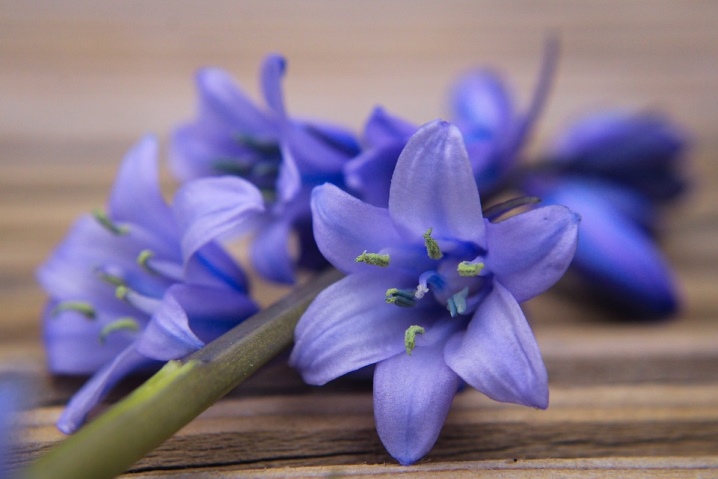
The shrub itself can be low, medium and tall.
In height, some varieties reach 1.5 m, and dwarf species do not grow up to 10 cm. Flowering usually begins in early summer and continues until late autumn. Bellflower seeds, formed after flowering, remain viable for several years.
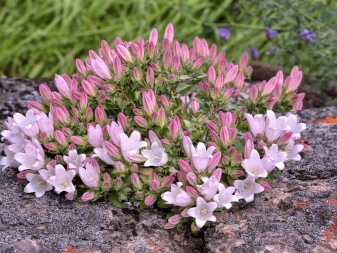
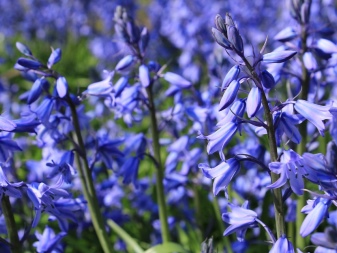
Types and varieties
There are perennial, biennial and annual bells, mostly gardeners prefer perennial varieties. And also the plant can be classified into tall and undersized varieties. Tall crops have a stem height of 40 cm, several species belong to them.
Nettle
The height of a single stem is 60-80 cm, the foliage is slightly fleecy, similar in structure to nettle. The petals are blue with a slight lilac tint. There are also white varieties. More often found in Europe or Siberia, it is characterized by picky about the conditions of detention.
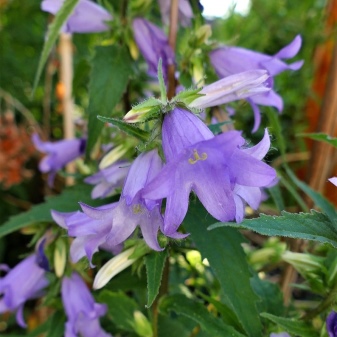

Lactobacillus
It reaches a height of 110-130 cm. During flowering, the plant is decorated with many white or blue flowers. The mountainous regions of the Caucasus are considered the birthplace of the species.

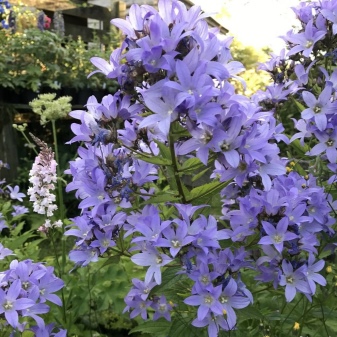
Peach
This beautiful plant has a sophisticated, elegant yet very firm stem. It grows up to 1 m. The leaves are elongated, the flowers are large, white or sky-colored. The varieties attract attention with their abundant and long flowering. The plant loves sandy soils, and in its natural environment it is more often found in pine forests. The most popular varieties of peach-leaved varieties are white "Alba", blue "Celestina", blue "Percy piper".
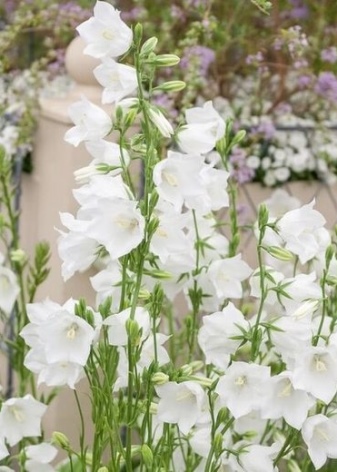
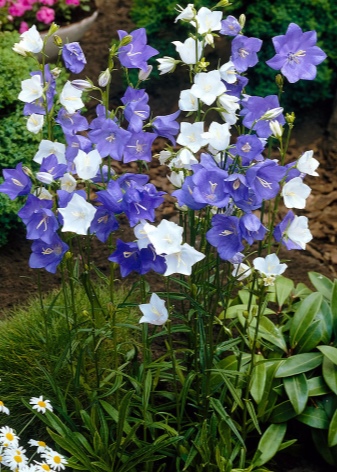
Bored
In length, this species reaches 80 cm, although there are also low forms, the growth of which does not exceed 30 cm.At the top, bunches of blue and purple flowers are formed. Differs in unpretentious care. The most common varieties are Carolina lilac and Superba purple.
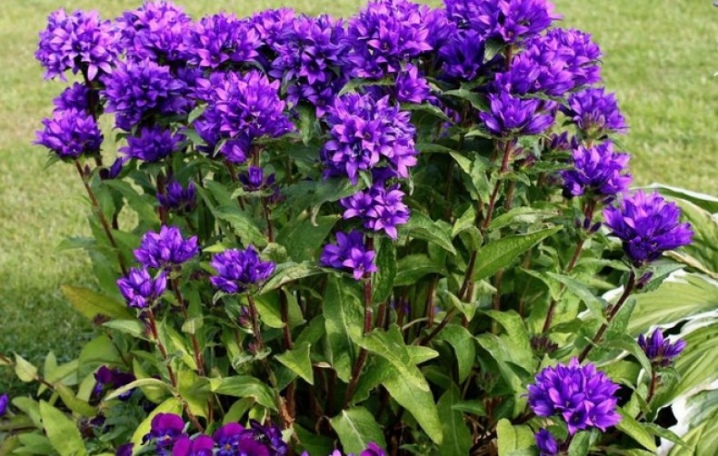
Broadleaf
The tallest species, the size of which can be 150 cm. The flowers are large, dense, the petals are blue or purple in color. In the wild, it prefers to grow in the Caucasus or Altai. The plant is represented by the varieties "Makranta" and "Brandwood".
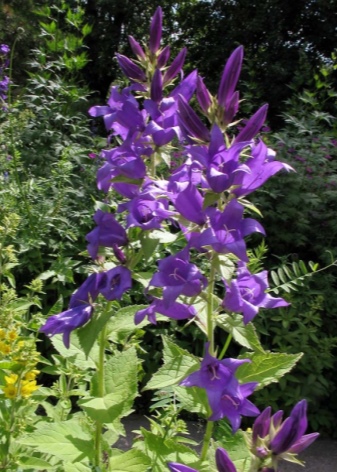

Volzhsky
Herbaceous tasseled perennial, listed in the Red Book of the Chuvash Republic. Rather, it belongs to a medium-sized species, since the maximum height is 50 cm. It has angular stems.
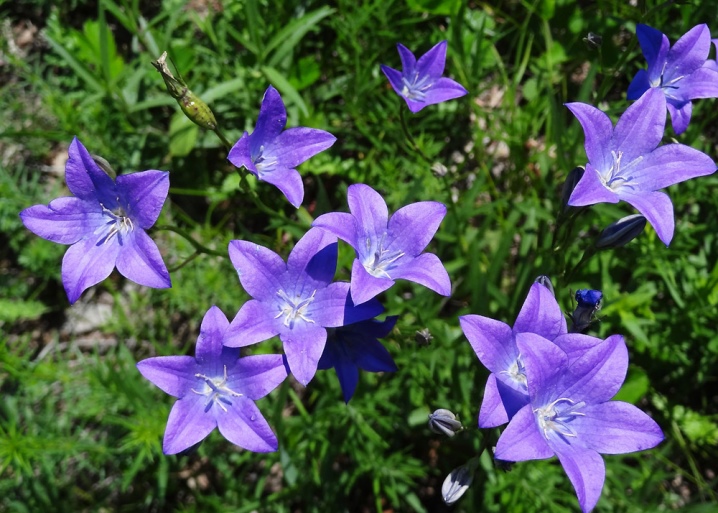
Experienced gardeners often prefer some undersized species.
Carpathian
Likes to grow on rocky terrain in lime-rich soil. The shrub grows well, and is about 20-40 cm in height. The flowers are large, painted in a white or blue tint. Differs in creeping and tenacious rhizome. Among the popular varieties, gardeners distinguish "Gnome".
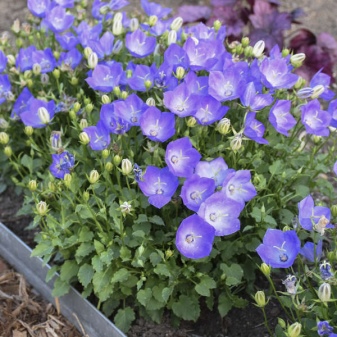
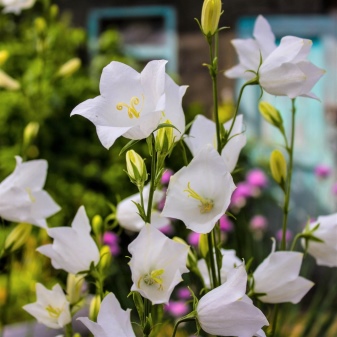
Gargan
This species is a dense pillow with stems, the size of which does not exceed 15 cm. Blue flowers are small, but there are many of them.

Pozharsky bell
The size of this instance is up to 20 cm. The shrub grows luxuriantly, delicate blue flowers in the shape of stars deserve special attention. This species loves to settle on rocky soil.
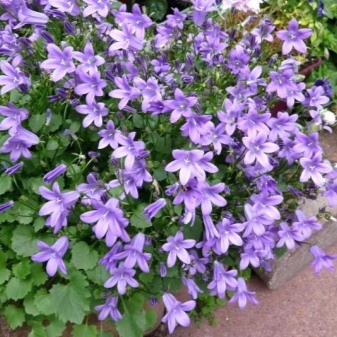
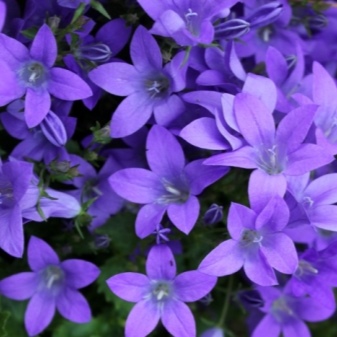
Point
The culture reaches a height of 30 cm and is distinguished by massive dark pink slightly drooping flowers. The species is widespread in the Far East, and the more popular varieties are Othello and Kent Bell.
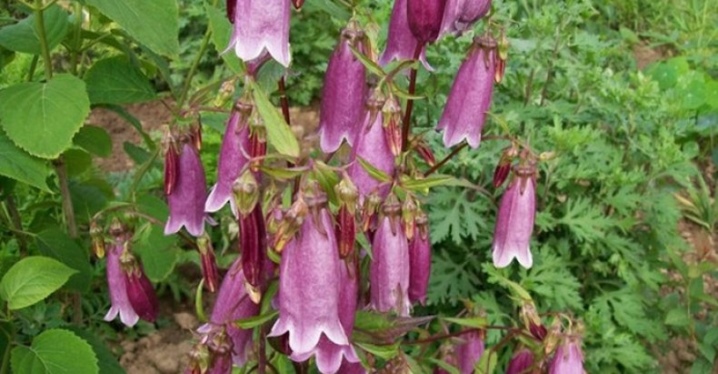
Equifolia
This variety is intended for home cultivation, especially often flower growers choose hybrids "groom" and "bride"... This is a miniature ampelous plant with shoots up to 30 cm long. This also includes the Get mi variety up to 10 cm high, it can be represented by blue, blue or white flowers.
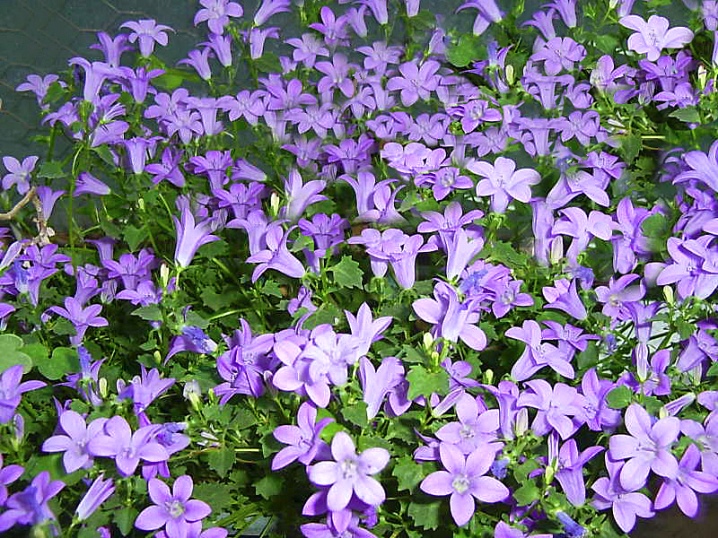
The subtleties of planting in open ground
The landing of the campanula presupposes the observance of certain conditions.
Optimal timing
In open ground, street species are planted at a time when there is no longer a threat of spring frosts. In southern climates, planting can be carried out in late April or early May, in cooler regions it is better to start the procedure in late May or early June. In the warm southern area, planting for the winter is allowed. In this case, planting is carried out until the first half of October. Before wintering, the flower bed is mulched.
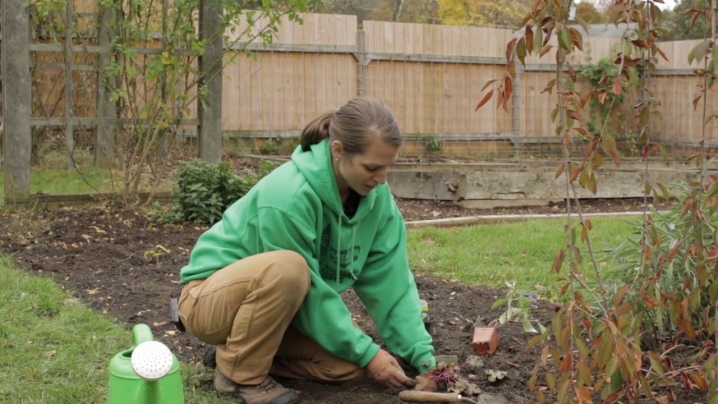
Seat selection
The culture prefers to grow in a well-lit place, although shade-loving varieties occasionally come across, but there are very few of them - such species are distinguished by dark green foliage. The plant does not tolerate drafts, which should be taken into account when choosing a planting site.
Most varieties prefer neutral or slightly alkaline, well-drained loamy soils. Before planting, the soil is prepared. If it is too heavy, then you need to add sand and humus; if this is a depleted type of soil, then you can dilute it with sod land and fertilizers.
It is important to abandon the introduction of fresh manure and peat - these compounds provoke the spread of fungi on the ground.

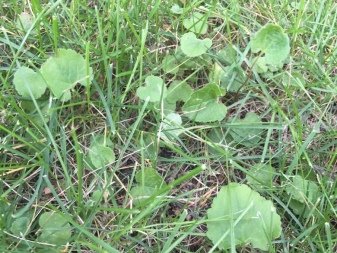
How to plant
In order for the flowers to always experience a sufficient amount of moisture and nutrients, it is better to plant them as far as possible from tall bushes and trees. When planting low-growing varieties, the distance between the specimens should be 10-15 cm; when planting medium-sized species, this distance should be 20-30 cm; the recommended spacing for tall bells is 40-50 cm. After planting, the soil is well moistened and tamped.
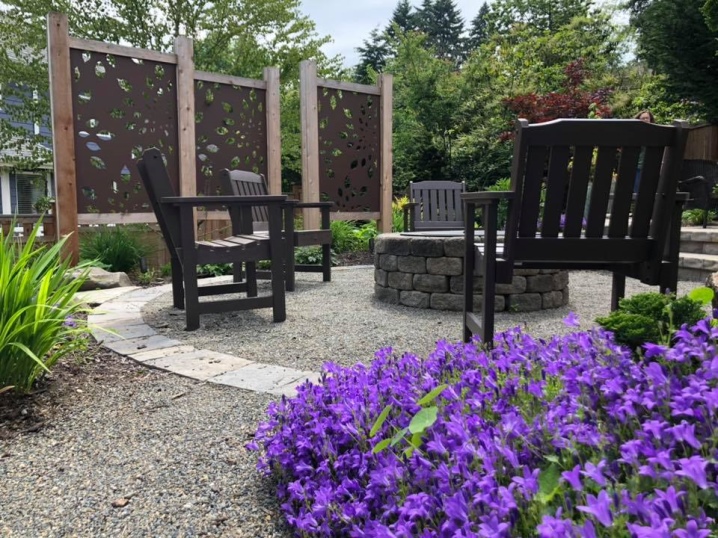
How to care for
The bell is a picky plant, but it requires adherence to certain rules of care.
Watering
This culture almost does not need moisture; it is necessary to arrange watering for flowers only in dry times. On ordinary days, you need to monitor the condition of the soil, avoiding waterlogging or drying out.
If there is no precipitation, then it is enough to water the plant 1-2 times a week so that it does not dry out.
In this case, you should use soft settled water, rain or melt will do.

After each watering, it is advisable to loosen the soil; this procedure is designed to maintain aeration. But it is important not to overdo it - it is enough to deepen the tool by 3 cm when loosening.And also, during cultivation, you should periodically rid the flower bed in the garden from weeds and maintain a layer of mulch. To prevent overheating of the roots, the mulch layer should not exceed 5 cm.
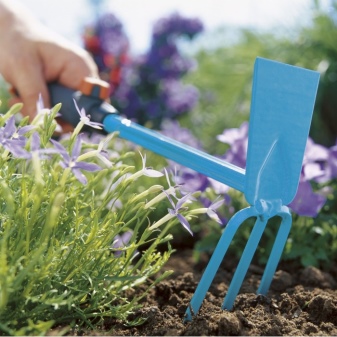
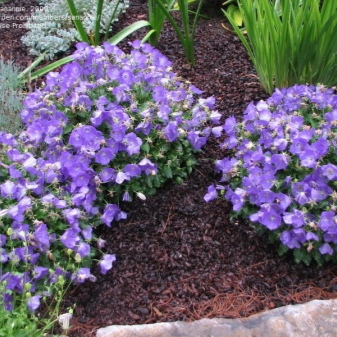
Top dressing
The first fertilizers are applied before the beginning of the active vegetation stage - this is the spring period. At this time, mixtures containing nitrogen are suitable. For example, urea can be used, adding 15-20 g per 1 m2. Closer to flowering, the culture should be fed with a liquid complex mixture for decorative flowering plants. An alternative option during this period is nitrophoska in a proportion of 20-25 g per 1 m2. If the soil where the flowers are grown is too poor, then in the fall it is flavored with superphosphate in the amount of 40-50 g per 1 m2.
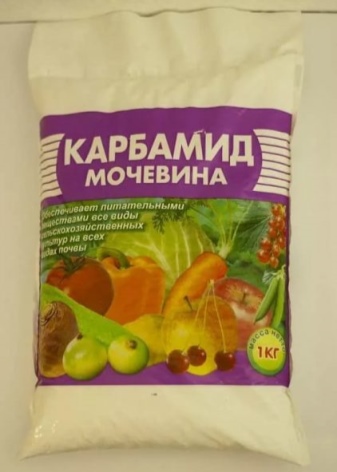

Preparing for winter
After flowering and collecting seeds, the shrub must be cut at the root. To protect this representative of the flora from the cold, for the winter it is covered with a 20-centimeter layer of compost or peat. When grown in cold climates, it is recommended to insulate the bell with dry foliage or spruce branches. Some gardeners use agrofibre as a winter shelter.
It is better not to use manure or humus as a heater, otherwise in the spring the plant will experience an excess of nitrogen. These substances are allowed to be used only on depleted soil. If the gardener intends to propagate the plant with seeds, then they must be collected until they are fully ripe, until they crumble. After collecting, the grains are sent to storage in a dry and warm place; they retain their germination capacity for up to 4 years.
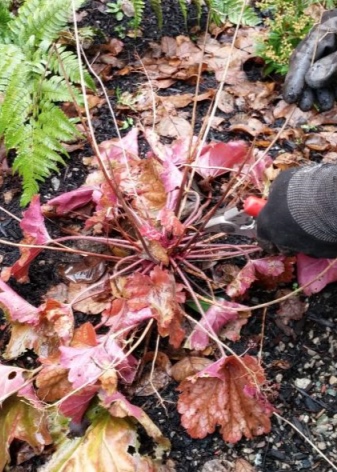
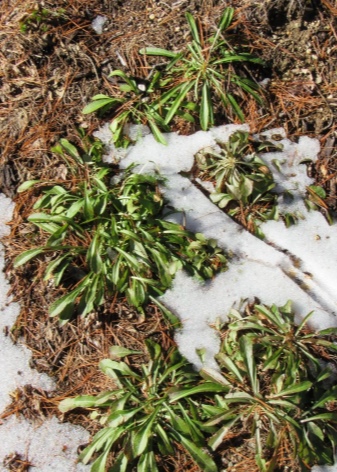
Pruning is carried out not only for the purpose of preparing for winter, but also as a sanitary procedure.
So, during the growing season, all injured, wilted and deformed leaves and shoots should be eliminated... Gardeners recommend manual pruning, as bell fragments are fragile and can be easily removed without the use of tools. To enhance flowering, some summer residents in the first year of growth pinch all formed buds.
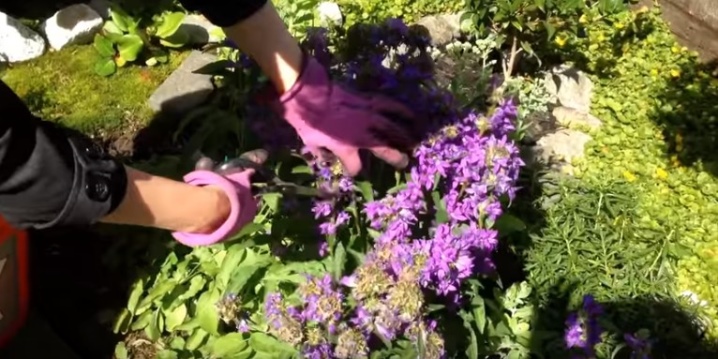
Reproduction methods
It is quite simple to propagate bells, even a novice florist can cope with the task. There are several ways.
- Division of the bush. The most popular and promising breeding method. As soon as the plants have faded - usually in August or early autumn - the specimen is carefully removed from the ground and the rhizome is divided into separate lobes so that each part contains growth buds. The separated fragments are planted in a new place so that the root collar is flush with the soil surface. This method is not suitable for varieties with a taproot system.
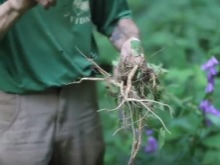
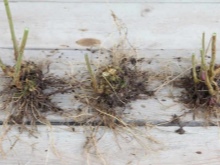
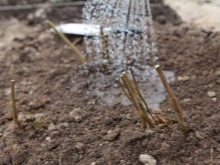
- Young shoots. This procedure is carried out in the spring. The required number of offspring should be separated from the bush and planted on a previously prepared area in the garden.
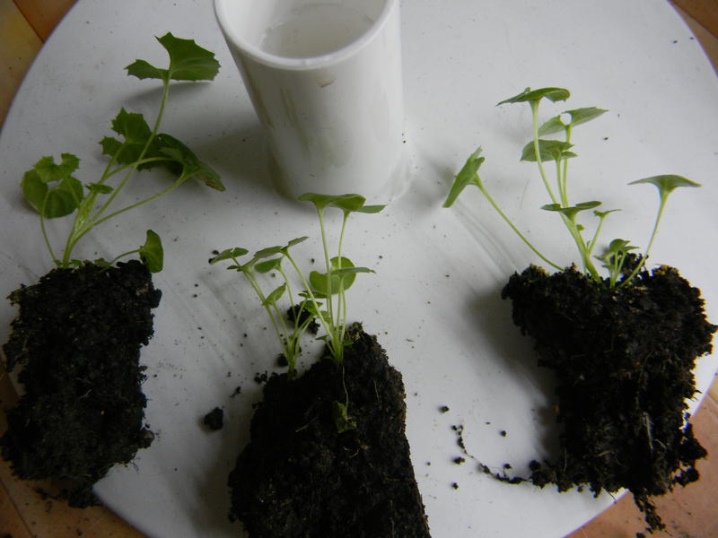
- Cuttings. At the first stage, propagation by green cuttings is the cutting of a young flowering stem from a healthy adult bush. Then the sprout is planted in the ground, shaded, covered with glass or a plastic bottle. The stalk will take root in a month, provided that it is grown in moist soil. Most often, this method is used for varieties with creeping shoots.
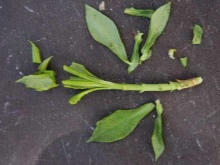
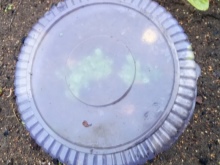
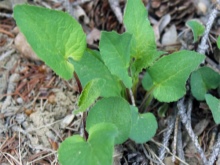
- Seeds. In this case, you can start sowing in the fall, but when planted in open ground, many seeds disappear, so it is better to postpone planting until spring and plant seeds in seedlings.
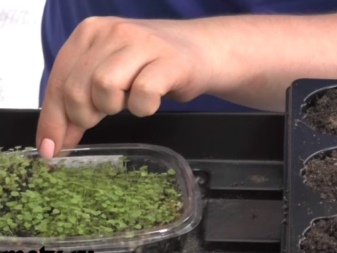

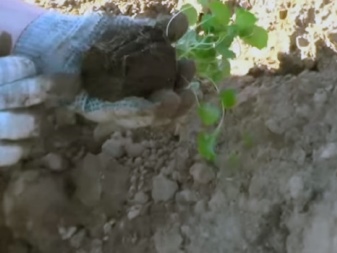
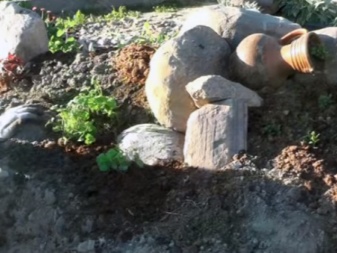
Growing at home
Caring for a bell, planted in indoor conditions, consists of a number of points.
Lighting
Like outdoor species, these plants prefer good lighting, and therefore the daylight hours must be long. At the same time, fragile leaves are quite vulnerable to direct sunlight, so it is worth making sure that the sun does not hit the plant. It is better to organize diffused lighting - in such conditions the flower will feel comfortable.
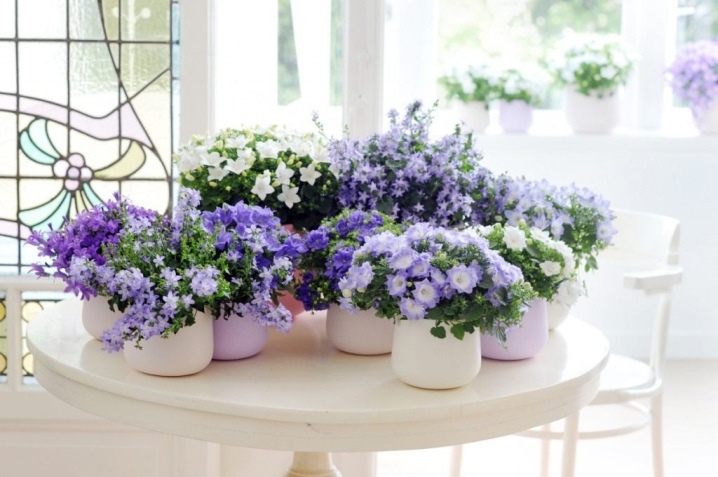
If the florist noticed that the crop is stretching shoots, then it can be assumed that it is experiencing a lack of lighting.
The most suitable location for the pot is the east or west part of the windows. If the flower is on the south side, then it should be shaded a little.

Temperature
These species do not like heat, they feel better in a cool room. Favorable conditions for growing - 20-22 degrees Celsius. If the room is too hot, you can increase the humidity to balance to ease the condition of the flower.
In winter, the temperature for a plant should not exceed 15 degrees, the culture will withstand an indicator of 5-10 degrees. If during the period of winter dormancy it will experience warmth, then next year it will not please the owner with a lush and abundant flowering.
It is quite allowed to take the pot out to the terrace or balcony during flowering, the influence of fresh air will not affect the quality of flowering. True, next year the flowers will not bloom again, so it is better to leave them in the room and grow them as a perennial crop.
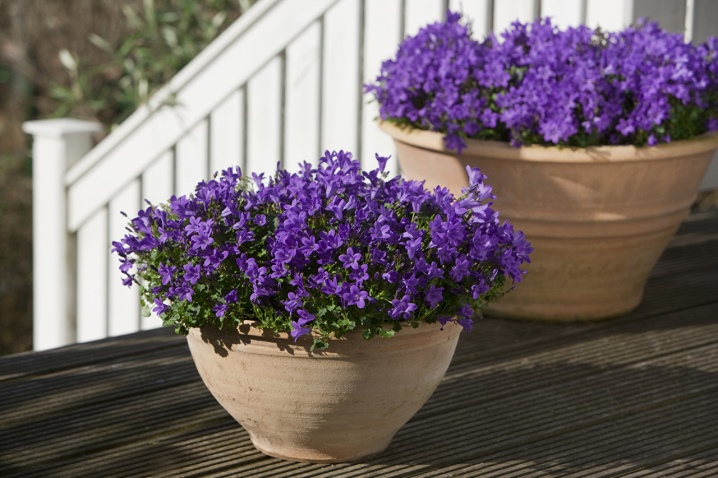
Watering
Indoor flowers also retain their love for moisture. During the period of active development in spring and summer, the plant needs frequent but moderate watering. Make sure that the flower does not overflow, and also control the moisture of the substrate. After flowering, watering is gradually reduced, leaving the culture in almost dry conditions.
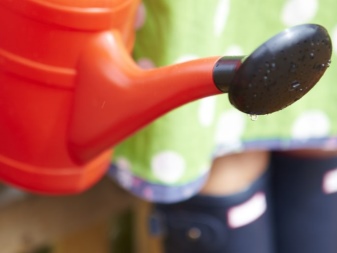

Air humidity
This indicator is not so important for the full development of the flower. The culture grows well both in a greenhouse and in an ordinary room. If the container with the planting is near the battery, or the plant is experiencing a dry time, then it will not be worse if the florist carries out the spraying procedure, besides, the flowers and buds easily tolerate getting wet.
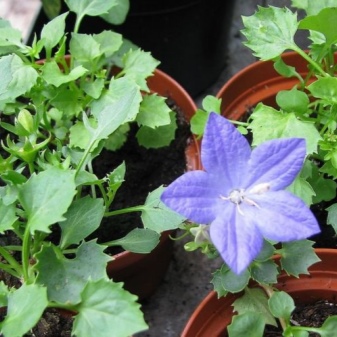

Top dressing
Fertilizer is applied only during the period of active development - from spring awakening to the end of flowering. Flowers are fed every two weeks; mixtures for flowering indoor plants are suitable as additional nutrition. As soon as growth stops, feeding ends abruptly.

Combination with other plants
In landscape design, low-growing and tall varieties are combined with chamomiles, low-growing phlox, red loaches. Tall species can be made the center of a flower arrangement or planted in the middle of a flower bed. Carpathian varieties look impressive under the crowns of various trees.
Low types are good for collective plantings, for example, they look spectacular when decorating a curb. The same Carpathian species or, for example, crowded varieties can be used to create rose gardens. Picturesque paintings can be created by placing bells on rocky hills.
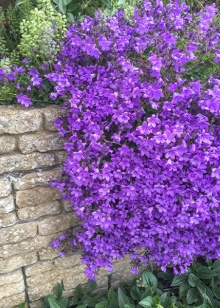
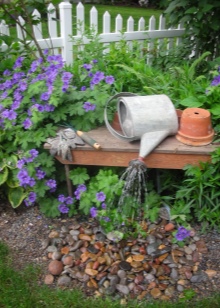

Diseases and pests
The culture attracts gardeners also because it has a strong immunity against disease and pests. However, sometimes this problem is not bypassed by the bells, especially often when the rules of agricultural technology are not followed.
So, long-term cultivation in one place can provoke the development of fungi such as rust, powdery mildew, root rot and root collar.
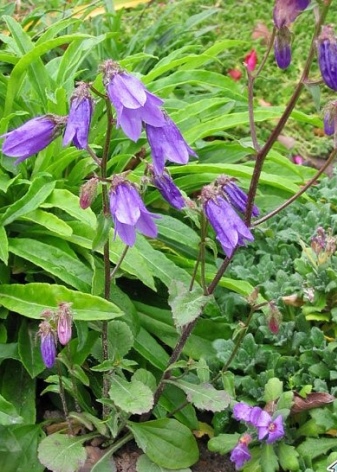
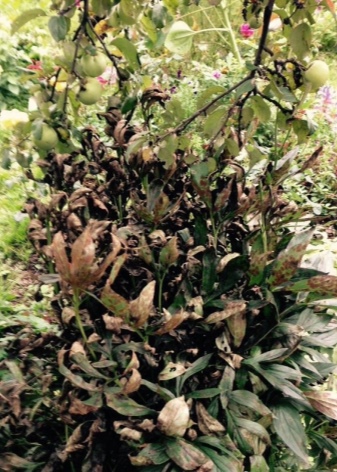
Rust is indicated by yellow or brown pads on the inside of the leaf. The leaves damaged by the disease dry up. Mechanical elimination of the affected fragments will help to revive the plant. And also in the spring and autumn, a diseased specimen should be treated with a 0.2% solution of "Fundazol".
Noticing the brown parts of the plant, which gradually soften, rot, a gray coating forms on them, it can be assumed that the bell has become a victim of rot. An effective method of struggle will again serve as a 0.2% solution of "Fundazol". Powdery mildew is indicated by the formation of a whitish bloom. As a preventive measure, the culture is treated before flowering with a solution of copper sulfate in a proportion of 100 g per 10 liters of water.

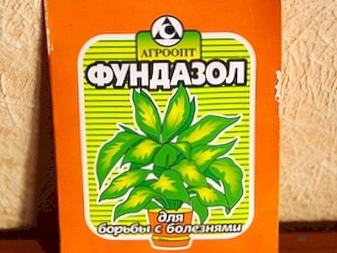
Of insects, slugs are the main enemies.
They love to feast on the leaves and flowers of the culture represented. These pests are the result of non-compliance with the conditions of planting and care. For example, they often affect thickened plantings, appear with poor-quality soil cultivation and untimely weed removal.
Usually gardeners use metaldehyde to control slugs. In addition, manual assembly of individuals is an effective method. Some summer residents specifically populate the site with frogs, lizards, hedgehogs, which will help to get rid of slugs in a natural way.
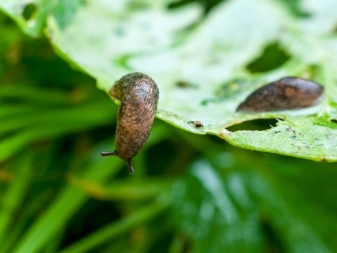
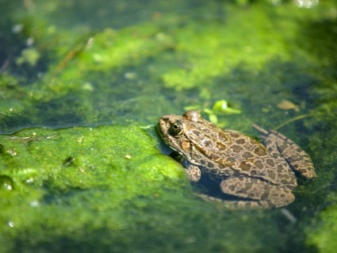
Sometimes the roots are damaged by common bears. To rid the plant of this scourge, the soil should be thoroughly loosened throughout the growing season. Loosening will help destroy the insect's underground passages, destroy eggs and larvae, and make it difficult to get to the roots. Try to refuse this type of feeding, like the mullein - it attracts the bear.
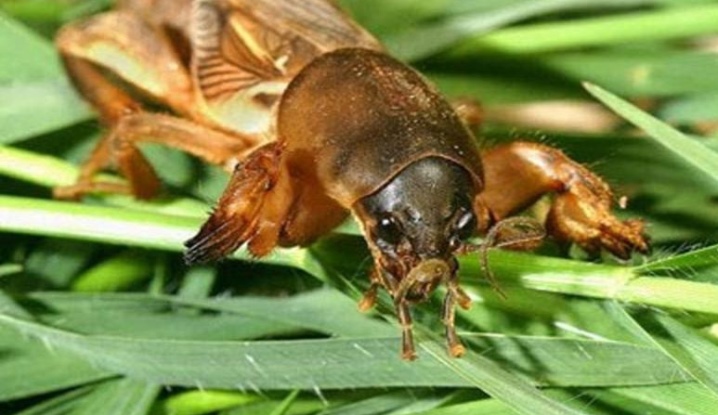
Beautiful examples
Bells can be not only a favorite houseplant, but also become a part of interior design. For example, flowers can be used as a beautiful accent when decorating a living room. Pots with delicate blue flowers can be placed in empty boring corners of the apartment. Balconies and terraces decorated with bells look very nice.
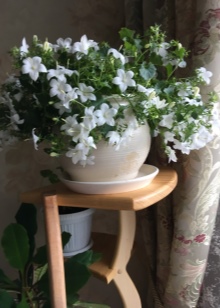
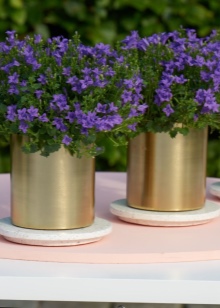
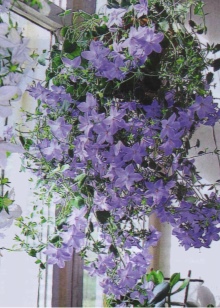
But still, this indoor culture looks most effective as a single accent. For example, the room in which the bells are planted on a “clean” soft restrained background will be filled with a special romantic and girlish atmosphere.
But fanciful containers and an abundance of design elements when decorating a room with bells are best avoided - these are modest, delicate flowers, the delicate image of which will only deteriorate when the design is supplemented with unnecessary variegated details.

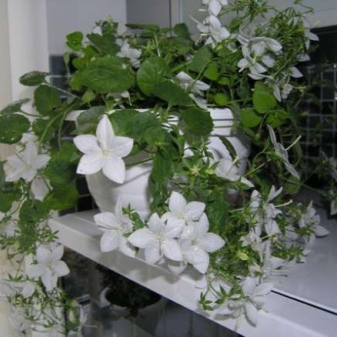
See the video for different types of bells.
































































































The comment was sent successfully.